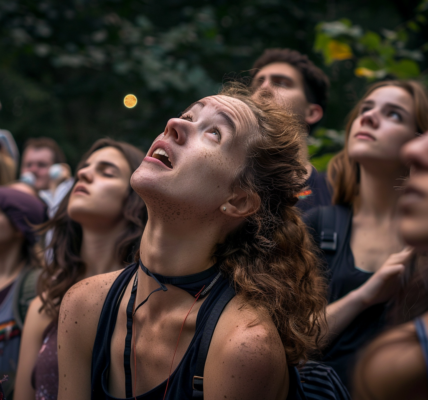Nasa astronaut Don Pettit, currently on his fourth mission aboard the International Space Station (ISS), has been captivating audiences with stunning imagery captured from orbit. His latest photographs showcase not only the breathtaking beauty of our planet but also highlight an emerging phenomenon known as ‘space fireflies,’ which refer to the flashes of sunlight reflected off SpaceX’s Starlink satellites.
Pettit shared a remarkable image on social media, illustrating the effect of sunlight reflecting off these satellites as they traverse the night sky. “Cosmic fireflies. Actually, these are Starlink satellites momentarily flashing sunlight towards @Space_Station,” he tweeted, providing a unique perspective on the growing number of satellites in low-Earth orbit.
As of 2024, SpaceX has successfully launched over 6,700 Starlink satellites, with ambitious plans to expand this constellation to a staggering 42,000. This extensive deployment aims to provide high-speed internet access across the globe, particularly in underserved areas. However, the increasing visibility of these satellites raises significant concerns for astronomers and scientists alike.
The phenomenon of ‘space fireflies’ has sparked discussions among the scientific community regarding its impact on astronomical observations. Astronomers have voiced their concerns about the interference caused by the glare of satellites, which complicates the study of distant celestial bodies. The reflections can obstruct ground-based telescopes, making it challenging to gather accurate data on galaxies and stars.
Moreover, the introduction of the second-generation Starlink V2 satellites, which began deployment in 2023, has exacerbated these challenges. The electromagnetic radiation emitted by these new satellites disrupts radio astronomy observatories, further complicating the already delicate balance between technological advancement and scientific discovery. As SpaceX continues to launch approximately 40 new satellites each week, the potential for increased interference grows.
Professor Jessica Dempsey, director of the Netherlands Institute for Radio Astronomy (ASTRON), has been vocal about the implications of satellite proliferation on terrestrial astronomy. She warns, “If the problem is not solved, it will become an existential threat to many areas of science.” This statement underscores the urgency of finding solutions to mitigate the impact of satellite glows on astronomical research.
In response to these concerns, SpaceX is actively seeking ways to address the issue. The company is exploring design modifications aimed at reducing the glare emitted by their satellites. However, skepticism persists within the scientific community, particularly regarding the complexities and costs associated with implementing effective solutions for radio astronomy.
As the debate continues, the balance between advancing technology and preserving the integrity of scientific research remains a pressing issue. The dazzling images captured by astronauts like Don Pettit serve as a reminder of the beauty of our universe, while also highlighting the challenges posed by the increasing presence of artificial satellites in orbit.
As we move forward, it will be crucial for both the aerospace industry and the scientific community to collaborate in finding solutions that allow for the continued exploration of space without compromising our ability to observe and understand the cosmos.





